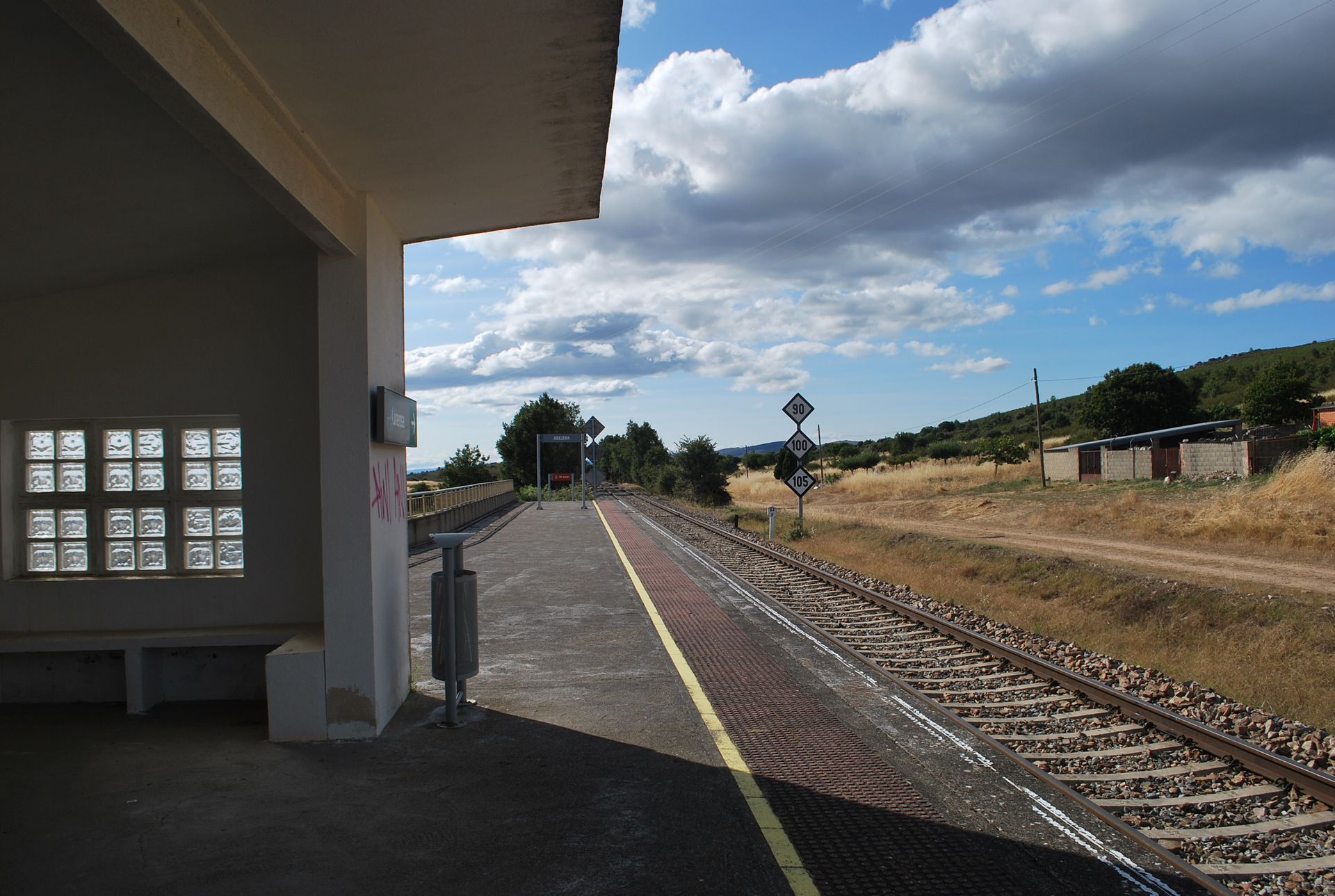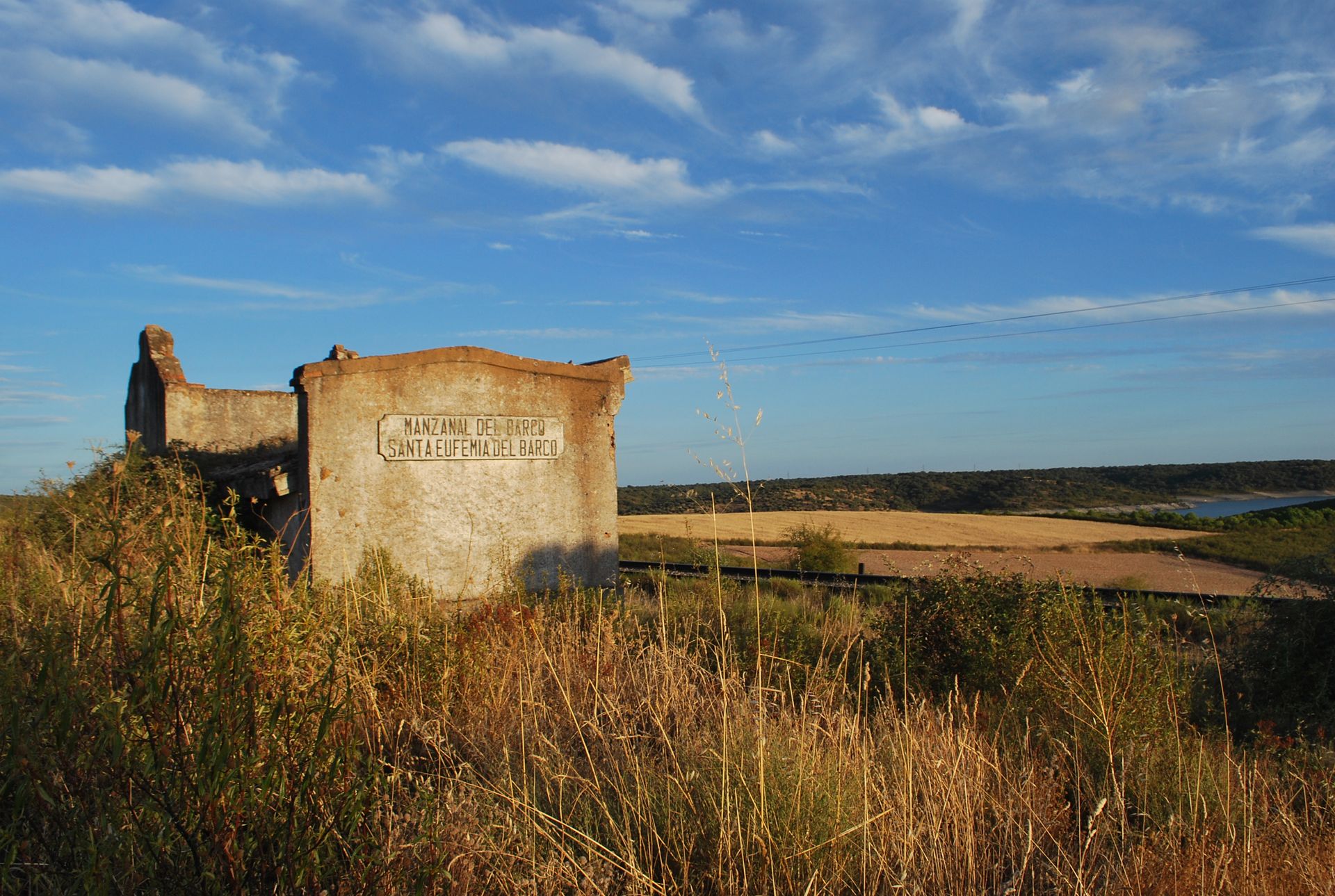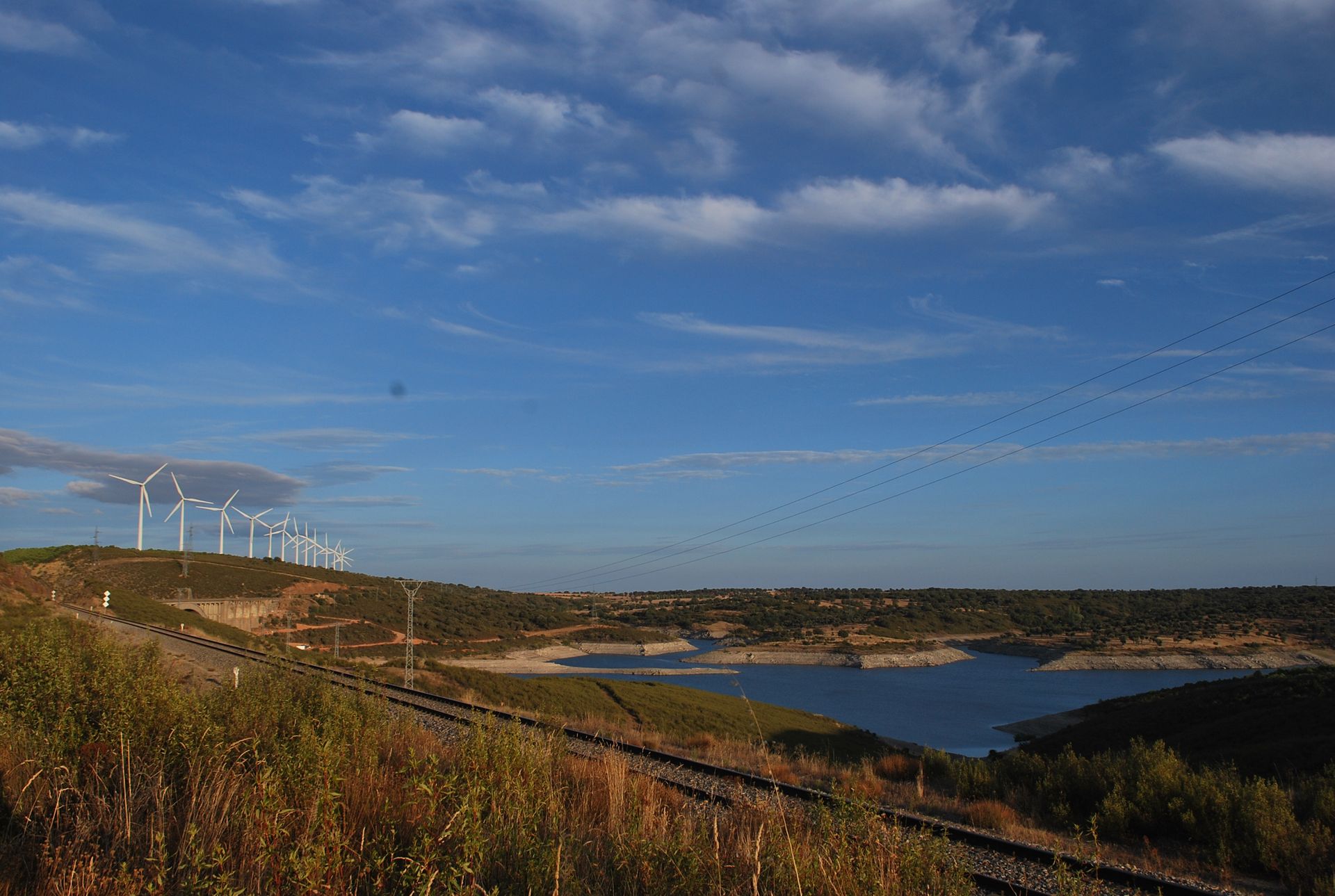Zamora – Puebla de Sanabria
CHARACTERISTICS
- Estación de Zamora (UTM 30T 271376 4599656); (P.K. 0,000)
- OUT OF SERVICEEstación La Hiniesta (P.K. 9,706)
- OUT OF SERVICEEstación Andavías (P.K. 18,376)
- Estación de Carbajales de Alba (UTM 30T 252637 4618694); (P.K. 30,100)
- OUT OF SERVICEEstación Manzanal del Barco - Santa Eufemia del Barco (P.K. 24,100)
- OUT OF SERVICEEstación Losacio-San Martín de Tábara (P.K. 39,900)
- Estación de Ferreruela de Tábara (UTM 29T 743245 4627724); (P.K. 45,300)
- Estación de Abejera (UTM 29T 737428 4632564); (P.K. 53,000)
- Estación de Sarracín de Aliste (UTM 29T 732018 4636710); (P.K. 61,300)
- Estación de Cabañas de Aliste (UTM 29T 728574 4637299); (P.K. 64,800)
- OUT OF SERVICEEstación Andavías (P.K. 70,000)
- OUT OF SERVICEEstación San Pedro de las Herrerías (P.K. 77,800)
- Estación de Linarejos-Pedroso (UTM 29T 708495 4646952); (P.K. 88,400)
- OUT OF SERVICEEstación Robledo de Sanabria (P.K. 95,500)
- Estación de Puebla de Sanabria (UTM 29T 696413 4657564); (P.K. 106,900)
In 1926, under the dictatorship of Primo de Rivera, the Preferred Plan for Urgently Needed Railway Construction was approved, commonly known as the Guadalhorce Plan, after the noble title of the then Minister of Public Works and the Count of Guadalhorce. This plan aimed to boost the country’s economy through the construction of railways, and although it was repealed with the advent of the Republic in 1931, several projects continued to be processed and were eventually carried out, although many others suffered significant delays and were abandoned.
This section formed part of the Zamora-Ourense line, which would extend to Santiago de Compostela and A Coruña, as the branch line to Vigo departed from the city of Ourense. Its construction began a year after the plan was approved. Given that the length and complexity of the route were high, the project was divided into four sections. The first from Zamora to Puebla de Sanabria, the second from Puebla de Sanabria to Ourense, the third from Ourense to Santiago de Compostela and finally, the section from Santiago to A Coruña. [1]
This plan aimed to boost the country's economy through the construction of railways [...]
This was one of many projects that were underway in Spain when the Republic was proclaimed and the country was going through a deep economic crisis. Initially the works were paralysed, but the workers’ protests were so intense and continuous that it was decided to resume them, delegating the financing to local entities. [1] [2]
Initially the works were paralysed, but the workers' protests were so intense and continuous that it was decided to resume them [...]
This new financial measure slowed down the pace of the works, which finally came to a complete halt with the start of the Civil War in 1936. After the war, a government decree was issued ordering the urgent resumption of the works, classifying them as a priority. It should be noted that from then on, the construction work was also carried out by political prisoners, as were many other public works in the country. [1]
The inauguration of the section that connects Zamora with Puebla de Sanabria did not take place until almost three decades after the approval of the Guadalhorce Plan.
The inauguration of the section that connects Zamora with Puebla de Sanabria did not take place until almost three decades after the approval of the Guadalhorce Plan.
The route from Zamora took advantage of the plain of the Duero river valley, crossing its tributary, the Esla river, over the Ricobayo reservoir by means of one of the most spectacular railway viaducts in our country, the Martín Gil viaduct. This structure, which preserves the name of the young engineer who designed it, was inaugurated at the beginning of the 1940s, achieving the honour of being the viaduct with the largest reinforced concrete arch in the world. The work was completed after the engineer’s premature death, with the collaboration of a young Eduardo Torroja, an indisputable figure in the history of concrete in Spain. [3]
The route from Zamora took advantage of the plain of the Duero river valley, crossing [...] the river Esla by means of one of the most spectacular railway viaducts in our country, the Martín Gil viaduct.
The plan was drawn up considering 11 stations, to which 4 halts were later added. It was not always possible to run the railway through the towns, so the railway work was complemented by access roads from the towns to their nearest station. Many of these stations have given rise to neighbourhoods, which have sometimes experienced more growth and activity than their original centre.
Many of these stations have given rise to neighbourhoods [...]
Currently, the section is used for medium-distance services on the Valladolid – Puebla de Sanabria line 18 and for freight traffic. The competition posed by the new high-speed rail corridor to Galicia exacerbates the deficient demand for the section, despite the fact that it links centres of tourist interest, such as Puebla de Sanabria, which are disconnected from the high-speed line. In terms of landscape, it is characterised by rural mountain scenery. It crosses a large part of the Sierra de la Culebra, a protected area that is regenerating after the great forest fire of 2022. The line has civil engineering works of interest, as well as stations of valuable architecture due to their uniqueness, in an uneven state of conservation. These buildings have the limitation of being located far from the villages, which are always small, with agricultural economies and, to a lesser extent, tourist economies. This makes it difficult to take advantage of them for tourist purposes.
Category C1.
Non-electrified track with wooden sleepers in need of repair.
Photographic report

Apeadero de Cabañas de Aliste (Zamora)

Apartadero - cagadero de Sarracín de Aliste (Zamora)

Apeadero de Abejera (Zamora)

Estación de Manzanal del Barco (Zamora)

Vista de la Línea 822 junto al embalse del Esla (Zamora)
References
-
[1] J. P. Torner, «Zamora a Orense», Ferrocarriles de España, 11-mar-2012. [En línea]. Ver referencia
-
[2] M. López., «La historia interminable», La Opinión de Zamora, 15-jun-2008. [En línea]. Ver referencia
-
[3] Asociación Ferroviaria Zamorana, «Línea Zamora - Orense - La Coruña», Asociación Ferroviaria Zamorana. [En línea]. Ver referencia